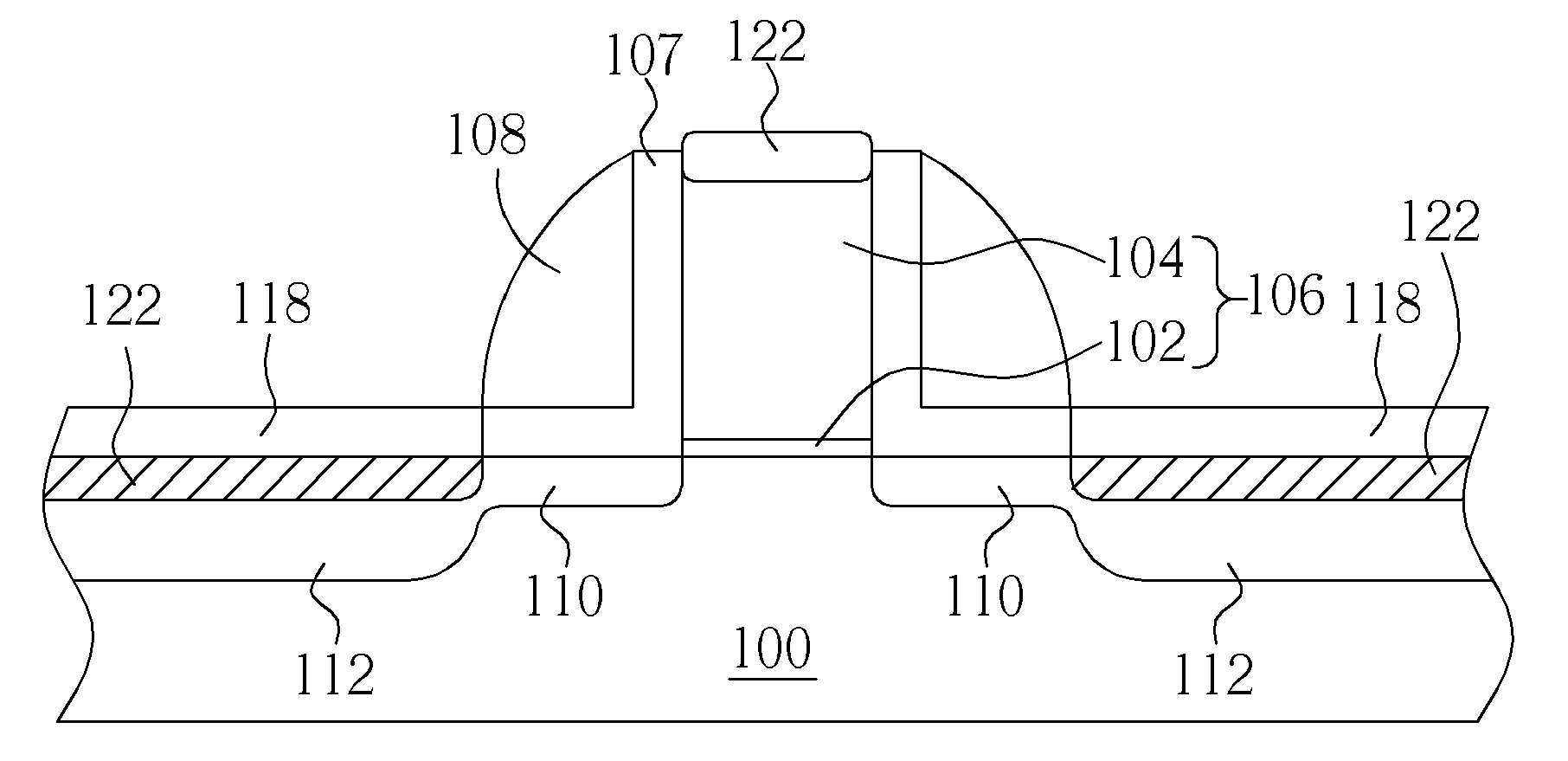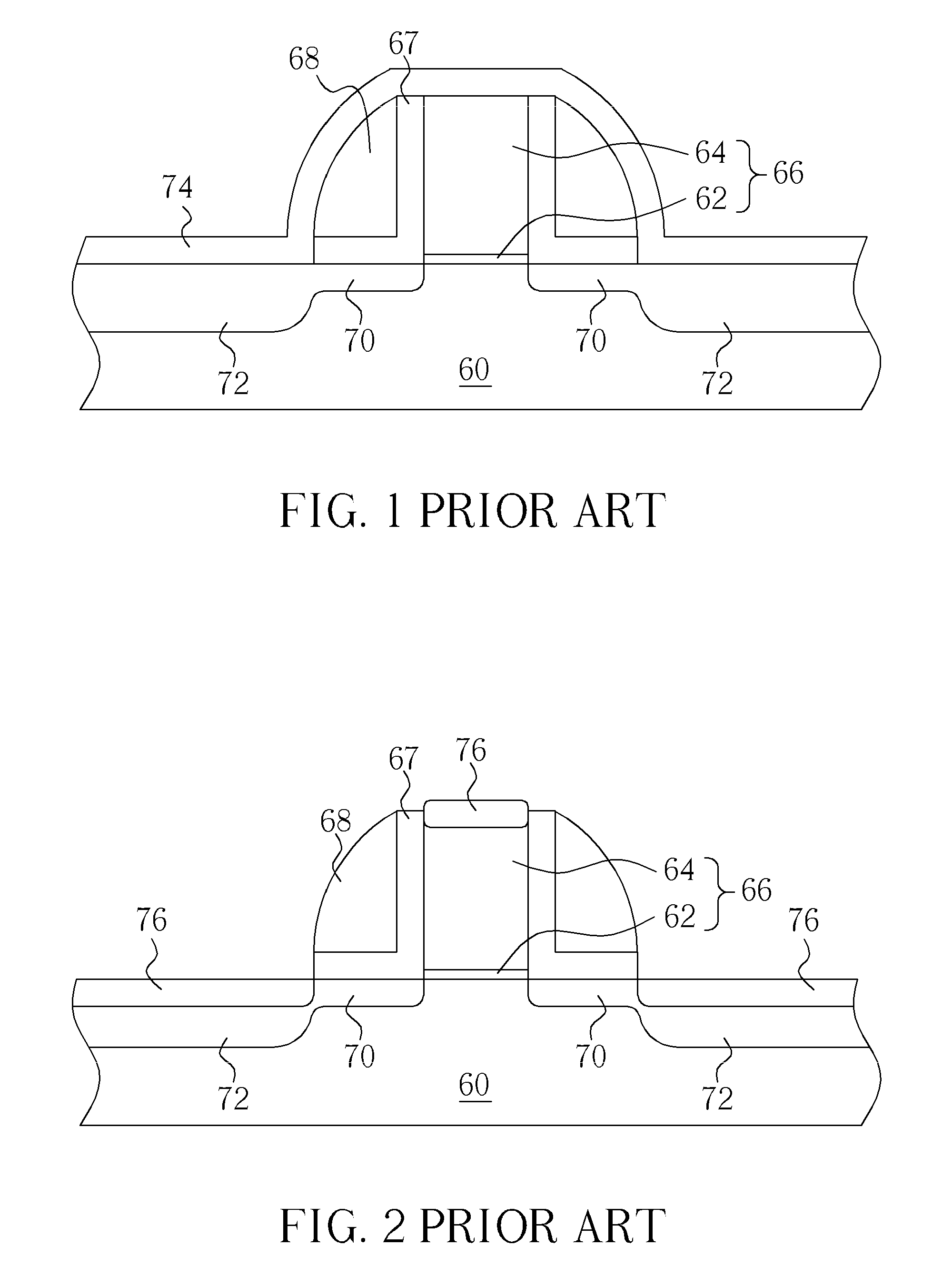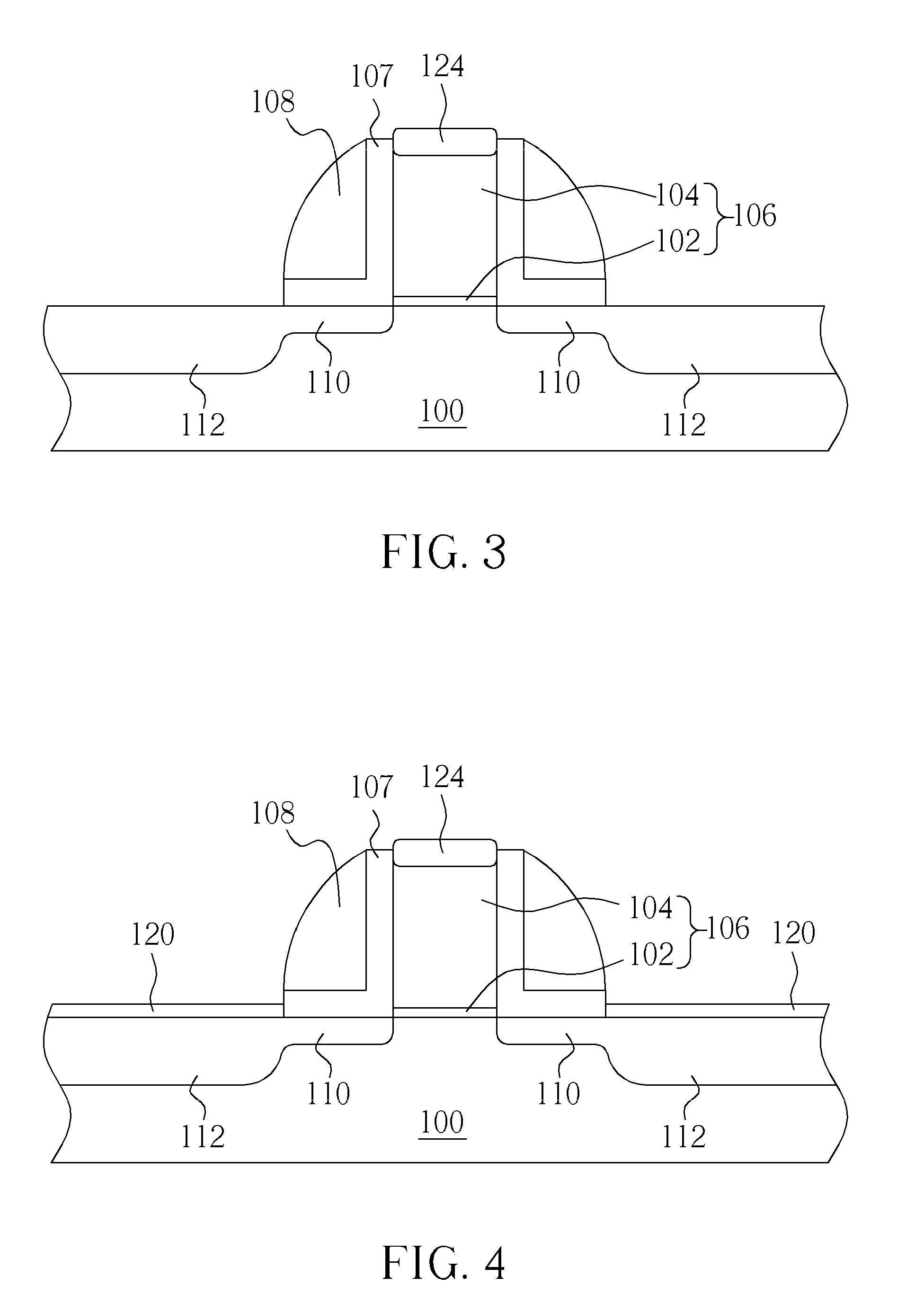Method for fabricating mos transistors
a transistor and mos technology, applied in the direction of transistors, semiconductor devices, electrical equipment, etc., can solve the problems of affecting the operation of the device, so as to improve the salicide piping and agglomeration
- Summary
- Abstract
- Description
- Claims
- Application Information
AI Technical Summary
Benefits of technology
Problems solved by technology
Method used
Image
Examples
Embodiment Construction
[0016]Referring to FIGS. 3-7, FIGS. 3-7 illustrate a method for fabricating a MOS transistor according to a preferred embodiment of the present invention. As shown in FIG. 3, a substrate 100, such as a wafer or a silicon-on-insulator (SOI) substrate is provided. Preferably, the semiconductor substrate 100 may include structures such as gates, source / drain regions, isolation regions, word lines, or resistors depending on different product demands and fabrication processes. According to the preferred embodiment of the present invention, a gate structure and source / drain region of a MOS transistor are utilized as an example, as shown in FIGS. 3-7. As shown in FIG. 3, the gate structure 102 includes a gate dielectric layer 102 and gate conductive layer 104. The gate dielectric layer 102 is preferably composed of insulating material such as silicon nitrides, oxides, oxynitrides, or metal oxides, and the gate conductive layer 104 is composed of conductive material such as doped polysilico...
PUM
 Login to View More
Login to View More Abstract
Description
Claims
Application Information
 Login to View More
Login to View More - R&D
- Intellectual Property
- Life Sciences
- Materials
- Tech Scout
- Unparalleled Data Quality
- Higher Quality Content
- 60% Fewer Hallucinations
Browse by: Latest US Patents, China's latest patents, Technical Efficacy Thesaurus, Application Domain, Technology Topic, Popular Technical Reports.
© 2025 PatSnap. All rights reserved.Legal|Privacy policy|Modern Slavery Act Transparency Statement|Sitemap|About US| Contact US: help@patsnap.com



